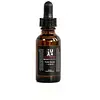What's inside
What's inside
 Key Ingredients
Key Ingredients

 Benefits
Benefits

 Concerns
Concerns

 Ingredients Side-by-side
Ingredients Side-by-side

Sd Alcohol 40
AstringentEthoxydiglycol
HumectantPropylene Glycol
HumectantAlpha-Arbutin
AntioxidantKojic Acid
AntioxidantGlycerin
HumectantGlycyrrhiza Glabra Root Extract
BleachingMorus Alba Leaf Extract
Skin ConditioningPanax Ginseng Berry Extract
Skin ConditioningResveratrol
AntioxidantHydroxyethylcellulose
Emulsion StabilisingButylene Glycol
HumectantSodium Lactate
BufferingSodium PCA
HumectantGlycine
BufferingFructose
HumectantUrea
BufferingNiacinamide
SmoothingInositol
HumectantSodium Benzoate
MaskingLactic Acid
BufferingSd Alcohol 40, Ethoxydiglycol, Propylene Glycol, Alpha-Arbutin, Kojic Acid, Glycerin, Glycyrrhiza Glabra Root Extract, Morus Alba Leaf Extract, Panax Ginseng Berry Extract, Resveratrol, Hydroxyethylcellulose, Butylene Glycol, Sodium Lactate, Sodium PCA, Glycine, Fructose, Urea, Niacinamide, Inositol, Sodium Benzoate, Lactic Acid
Water
Skin ConditioningButylene Glycol
HumectantPolysorbate 20
EmulsifyingGlycerin
HumectantAlpha-Arbutin
AntioxidantKojic Acid
AntioxidantMoringa Oleifera Seed Oil
EmollientGlycyrrhiza Glabra Root Extract
BleachingSodium Hyaluronate
HumectantCucumis Sativus Fruit Extract
EmollientCurcuma Longa Leaf Extract
Skin ConditioningRosmarinus Officinalis Leaf Extract
AntimicrobialHamamelis Virginiana Water
AstringentAloe Barbadensis Leaf Juice Powder
Skin ConditioningHelianthus Annuus Seed Oil
EmollientCoccinia Indica Fruit Extract
Skin ConditioningSolanum Melongena Fruit Extract
Skin ConditioningAmber Powder
Thymus Vulgaris Flower/Leaf Oil
MaskingOcimum Sanctum Leaf Extract
Skin ConditioningMelia Azadirachta Leaf Extract
Skin ConditioningMelia Azadirachta Flower Extract
Skin ConditioningCorallina Officinalis Extract
Skin ConditioningGlutathione
Polyacrylate Crosspolymer-6
Emulsion Stabilising1,2-Hexanediol
Skin ConditioningCaprylyl Glycol
EmollientSodium Gluconate
Skin ConditioningSclerotium Gum
Emulsion StabilisingEthylhexylglycerin
Skin ConditioningTropolone
Skin ConditioningCitric Acid
BufferingSodium Hydroxide
BufferingAlcohol
AntimicrobialPhenoxyethanol
PreservativeWater, Butylene Glycol, Polysorbate 20, Glycerin, Alpha-Arbutin, Kojic Acid, Moringa Oleifera Seed Oil, Glycyrrhiza Glabra Root Extract, Sodium Hyaluronate, Cucumis Sativus Fruit Extract, Curcuma Longa Leaf Extract, Rosmarinus Officinalis Leaf Extract, Hamamelis Virginiana Water, Aloe Barbadensis Leaf Juice Powder, Helianthus Annuus Seed Oil, Coccinia Indica Fruit Extract, Solanum Melongena Fruit Extract, Amber Powder, Thymus Vulgaris Flower/Leaf Oil, Ocimum Sanctum Leaf Extract, Melia Azadirachta Leaf Extract, Melia Azadirachta Flower Extract, Corallina Officinalis Extract, Glutathione, Polyacrylate Crosspolymer-6, 1,2-Hexanediol, Caprylyl Glycol, Sodium Gluconate, Sclerotium Gum, Ethylhexylglycerin, Tropolone, Citric Acid, Sodium Hydroxide, Alcohol, Phenoxyethanol
Ingredients Explained
These ingredients are found in both products.
Ingredients higher up in an ingredient list are typically present in a larger amount.
Alpha-Arbutin is made from hydroquinone and glucose. It may also be derived from the fermentation of soybeans.
This ingredient an antioxidant, meaning it helps protect your skin cells against damage.
Studies show this ingredient helps improve hyperpigmentation and fade discoloration.
Alpha-Arbutin may be used with other ingredients that help with hyperpigmentation. These ingredients include retinol, Vitamin C, niacinamide, and tranexamic acid.
Learn more about Alpha-ArbutinButylene Glycol (or BG) is used within cosmetic products for a few different reasons:
Overall, Butylene Glycol is a safe and well-rounded ingredient that works well with other ingredients.
Though this ingredient works well with most skin types, some people with sensitive skin may experience a reaction such as allergic rashes, closed comedones, or itchiness.
Learn more about Butylene GlycolGlycerin is already naturally found in your skin. It helps moisturize and protect your skin.
A study from 2016 found glycerin to be more effective as a humectant than AHAs and hyaluronic acid.
As a humectant, it helps the skin stay hydrated by pulling moisture to your skin. The low molecular weight of glycerin allows it to pull moisture into the deeper layers of your skin.
Hydrated skin improves your skin barrier; Your skin barrier helps protect against irritants and bacteria.
Glycerin has also been found to have antimicrobial and antiviral properties. Due to these properties, glycerin is often used in wound and burn treatments.
In cosmetics, glycerin is usually derived from plants such as soybean or palm. However, it can also be sourced from animals, such as tallow or animal fat.
This ingredient is organic, colorless, odorless, and non-toxic.
Glycerin is the name for this ingredient in American English. British English uses Glycerol/Glycerine.
Learn more about GlycerinGlycyrrhiza Glabra Root Extract is an extract of the roots of Licorice. It has been found to have several benefits such as skin hydrating, conditioning, and soothing.
One component, glabridin, has extra potent antioxidant and soothing properties. It has also been found to block pigmentation from UVB rays in guinea pigs.
Licorice Root also contains a flavonoid. Flavonoids are a natural substance from in plants. Flavonoids also have antioxidant properties.
Another component, glycyrrhizin, has been found to have anti-inflammatory and antimicrobial benefits. This may make licorice root extract effective at treating acne. However, more research is needed to support this.
Liquiritin is one of the flavone compounds found in licorice. It has been found to help lighten skin by preventing tyrosinase from reacting with tyrosine. When the two react, protein is converted to melanin. Melanin is the substance in your body that gives your features pigmentation.
Learn more about Glycyrrhiza Glabra Root ExtractKojic acid comes from fungi and can also be from fermented foods. It helps even out skin tone and reduce hyperpigmentation.
This ingredient works by blocking tyrosine, an enzyme that starts the process of skin darkening.
Kojic Acid is antifungal and often used to treat fungal infections. Additionally, it can help fight bacteria with its antimicrobrial properties. This can help treat acne as well.
A similar ingredient is arbutin.
Learn more about Kojic Acid